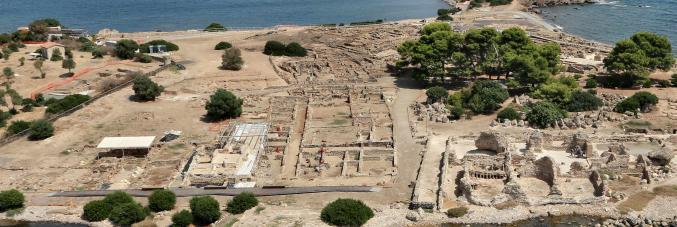
Uncovering Sardegna’s role in the dynamics of human population and mobility through biogeochemistry and artificial intelligence
21.07.2023
Researcher Melania Gigante, head of the Human Bioarchaeology team of the Department of Cultural Heritage at the University of Padua (dBC), along with the scholars Jacopo Bonetto and Alessandro Mazzariol (dBC) and the biogeochemistry experts of the Department of Chemical and Geological Sciences of the University of Modena and Reggio Emilia, Federico Lugli, Anna Cipriani and Elena Armaroli, author and publish a major study in the prestigious scientific journal Plos One.
Entitled Machine learning-based Sr isoscape of southern Sardinia: a tool for bio-geographic studies at the Phoenician-Punic site of Nora, this study is part of a broader research project aimed at building a reconstruction of the geographic mobility and population of Sardinia during the Phoenician and Punic eras found at the archaeological site of Nora.
Bioarchaeologist and first author, Melania Gigante explains, “This study marks an important point of arrival for our research, and while still in progress, this is the first time using of the chemical-physical analysis of strontium 87 and 86 isotopes to determine, on a biological basis, the movement of individuals from and towards the Phoenician and Punic settlement of Nora in Sardinia. We are trying to reconstruct who the ancient Nora people were and how the integration of non-natives changed the island during the settlement of Phoenician and, later, Punic people. We are doing this by analysing the biological archive of this population taken from the skeletal and dental remains recovered during the AD archaeological excavations in the Phoenician and Punic necropolis of Nora in recent years.
The element strontium is present in today’s ecosystem, as it was in the past. The relative concentration of the 87Sr and 86Sr isotopes vary according to the geological location and it transfers through what we ingest from the environment to us. This element fixes itself in the mineralized component of bones and teeth.”
Biogeochemist and research manager, Federico Lugli, explains “We used isotopic markers of individual records as a kind of isotopic signature of a body linked to the location of its early childhood.
Gigante continues, “This study holds a strong impact in our field of study because without a reliable local signal the entire analytical procedure could collapse."
Director of the Archaeological dBC Mission of Nora, Jacopo Bonetto, highlights that, “The scope of this study is twofold. The work is the first step towards the development of the first isoscape of southern Sardinia using new bioavailable Sr isotope data and a machine-learning approach, but also it constitutes a fundamental step in the study of population dynamics and bio-geographical mobility of ancient Sardinia.”
Gigante concludes by saying, “Last but not least, this map will be used to investigate intra-island mobility, which includes the movements of individuals from-and-to Nora and other settlements in the inland and coastal areas of southern Sardinia, involved in Phoenician-Punic and local settlement and occupation phenomena.”



